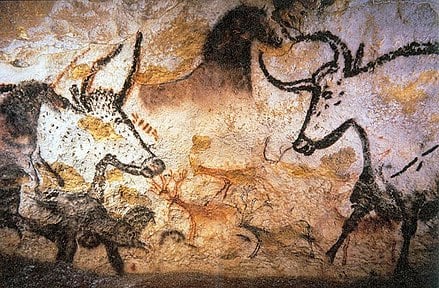Lascaux
For Lascaux in the Corrèze department, see Lascaux, Corrèze.
Lascaux (French: Grotte de Lascaux, “Lascaux Cave”; English: /læsˈkoʊ/, French: [lasko]) is a complex of caves near the village of Montignac, in the department of Dordogne in southwestern France. Over 600 parietal wall paintings cover the interior walls and ceilings of the cave. The paintings represent primarily large animals, typical local contemporary fauna that correspond with the fossil record of the Upper Paleolithic in the area. They are the combined effort of many generations and, with continued debate, the age of the paintings is now usually estimated at around 17,000 years (early Magdalenian). Lascaux was inducted into the UNESCO World Heritage Sites list in 1979, as … Continue Reading (14 minute read)